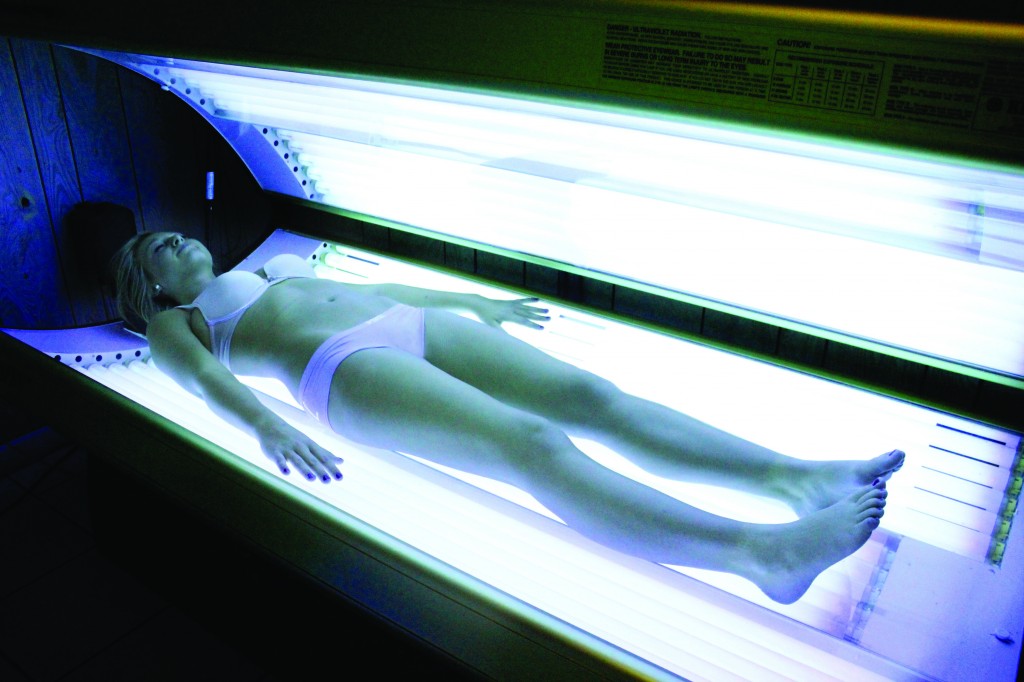
Like many students, Laken Tabor, sophomore from Marion, Ky., visits the tanning bed during the winter months.
As Spring Break approaches, students head to the tanning salons to prepare for beach season. They are faced with the conflict of health effects versus the aesthetic value of summer color.
Chelsea Hill, employee at Campus Tan, said peak season for tanning begins as soon as students come back from Winter Break.
“I think it is important to tan at least two weeks before you go (to the beach),” Hill said. “I think the sun is a lot stronger than tanning in a bed. I have never burned in a tanning bed, but I burn in the sun.”
In a survey of North Carolina Community College students, the results showed the most common reasons for using the tanning bed were, “I think I look better when I tan,” and “I tan to prepare for summer.”
Behavioral scientist Jerod Stapleton, from the Cancer Institute of New Jersey, said, “What our findings show is that indoor tanning, advertised by the indoor tanning industry as a controlled ultraviolet radiation exposure resulting in minimal risk of burn, results in quite the opposite, our results show that sunburn is a common occurrence related to tanning bed use.”
The initial burn is what has scientists and dermatologists worried. It is the long-term effects of UV radiation that makes them jump on prevention.
The World Health Organization recommends that, “Minors should not use indoor tanning equipment because indoor tanning devices emit UVA and UVB radiation, and because overexposure to UV radiation can lead to the development of skin cancer.”
According to the American Association of Pediatrics, “All skin damage in childhood, adolescence and young adulthood is a key factor in the development of skin cancer.”
According to the AAP, melanoma, the deadliest form of skin cancer, killed approximatly 7,800 people last year.
Melanoma often strikes people who have suffered deep, intense sunburns, particularly in childhood and adolescence. It is also the most common form of cancer among young adults.
Shelby Hall, junior from Louisville, Ky., said she takes the statistics to heart.
“I don’t tan because I do not think it is worth the increased risk of skin cancer,” she said. “I am fair skinned and try hard to put on sunscreen and not get burned during my job as a lifeguard.”
“I just don’t like how it feels, but I do try to wear it,” Hill said.
She said dealing with the sticky process of applying and reapplying sunscreen could be worth it.
According to the Skin Cancer Foundation website, “In a study of more than 1,600 adults over the course of a decade, researchers determined that subjects applying sunscreen with an SPF of 16 daily reduced their risk of melanoma by 50 percent.”
According to the?Skin Cancer Foundation, “The Skin Cancer Foundation is in full support of the efforts of Representatives Waxman and DeGette to expose the erroneous messaging disseminated by the tanning industry. By touting the false benefits of tanning, the owners and workers of tanning salons are putting the lives of people in jeopardy.”
Story by Amanda Grau, Staff writer.
I like how the Skin Cancer Foundation tells people to put sunscreen on daily when this can be dangerous. It doesn't take a rocket scientist to figure out that putting chemicals on skin daily isn't safe. Matter a fact sunscreen blocks UV rays when produces Vitamin D in the body, Higher levels of Vitamin D cuts your risk of getting Melanoma.
http://www.reuters.com/article/2011/06/27/us-vitamind-idUSTRE75Q6HK20110627
Sounds Counterproductive!